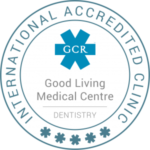Attrition

Attrition
Attrition is the loss of tooth structure as a result of tooth-to-tooth contact such as grinding of teeth, as in mastication or biting. It plays an important role to maintain the tooth crown root ratio. It is more commonly seen in men than in women and in some children with bruxism. Bruxism is a habit of grinding teeth seen in some children in sleep or during the daytime. Attrition is of two types, physiological and pathological attrition.
Physiological Attrition
This type of attrition occurs mainly due to the normal aging process. It begins with the wearing of the edge of an incisor followed by the cusp of the molars. Physiological attrition reduces both vertical tooth height and horizontal tooth width. As the enamel gets worn off and dentin is exposed, the teeth will be discolored or may appear brown. The teeth will appear flat and may cause severe sensitivity. In some advanced cases involving worn dentin and pulp exposure, severe pain will occur.
Pathological Attrition
Pathological attrition occurs due to structural defects in the tooth, or abnormalities in occlusion (teeth-to-teeth contact) or chewing pattern.
Structural defects in the tooth mean conditions like Amelogenesis imperfect where the loss of enamel is seen and Dentinogenesis imperfect where the loss of dentin is seen. These cases are more prone to attrition.
Abnormalities in occlusion can be developmental such as traumatic bites or overcrowding of teeth or deep bites that can cause attrition. Abnormalities can be also from the extraction of a tooth leading to heavy masticatory load on the other teeth. This can cause attrition of the other teeth.
Chewing pattern causing attrition is mainly seen in patients with Tobacco chewing and bruxism habits. Their chronic persistent chewing of coarse and abrasive foods leads to attrition.
The clinical sign of pathological attrition is severe tooth loss, brown color appearance, loosening of the teeth from the teeth socket, and pain. In most advanced cases, protrusion of the mandible can be seen due to excessive attrition.
Treatment
The treatment for attrition depends on the degree of tooth wear, age of the patient, etiology, symptoms, and patient’s desire. In children, most attrition is treated with habit-breaking appliances. Habit breaking appliance has to be worn daily and the continuation of the treatment to prevent attrition will be decided by the dentist based on the prognosis. In habits like tobacco chewing or coarse hard food chewing, diet modification has to be done and will be treated by the dentist.
In cases with malocclusion causing attrition, treatment will be based on their age and also after radiographic analysis by an orthodontist. Hypersensitivity and aesthetic correction can be treated with restorative materials depending on the level of tooth wear or exposure. it is always to get attrition treated in the early stages or when there is minimal tooth wear. Visit the dentist every six months for a complete dental check-up.




